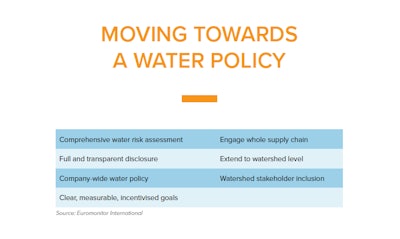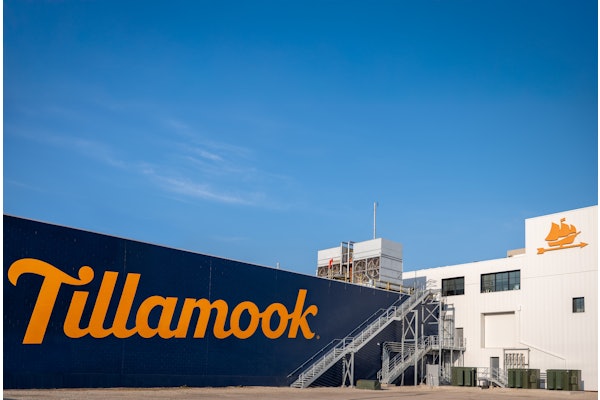Resiliency – the ability to overcome obstacles and find ways to succeed – is just as valuable to running a business as it is in personal life. Managers must constantly weigh the risks facing their business and plan ways to minimize them.
Food and beverage processors are particularly vulnerable to what the World Economic Forum in 2015 called the world’s number one long-term risk: the availability and affordability of clean water.
Whether it’s too little water due to drought, or flooding that creates havoc with crops or production facilities, or the cost of cleaning water contaminated by pollution, processors need to anticipate and find ways to ameliorate the risks involved with one of their most important resources.
Even where water is not a key part of the manufacturing process, it is often critical to providing raw materials. For food production, in particular, control over water use in the supply chain is critical since agriculture accounts for 70 percent of global water consumption.
In a new report on global water risk, researchers at Euromonitor International say businesses need to look at three main areas of potential impact on business continuity: operational costs, brand reputation among consumers and investors, and regulatory restrictions on water use and wastewater treatment.
“Water stress and poor water stewardship can have a sizeable impact on profits and a huge impact on a company’s reputation and operations,” says Sarah Boumphrey, the research firm’s global lead of economics and consumers. “The most obviously affected sector is the food and beverage industry, where water is a key input.”
While processors and their supply chains have taken a number of steps to use water more sustainably, these initial industry efforts have been neither as universal nor as comprehensive as needed given the potential threat water risks can pose to normal business operations.
Processors should aim to establish a company-wide water policy. The first step is to make a comprehensive risk assessment. This assessment needs to extend across all business aspects and drill through the supply chain, including third-party suppliers, and into end-consumer use where relevant.
Setting clear, quantifiable targets with time-specific deadlines for a company’s entire supply chain is essential for achieving water resilience goals. Coca-Cola, General Mills, Kellogg, Nestlé and Unilever were cited in the report for establishing deadline-driven goals for water management.
Comprehensive water stewardship needs to extend to protecting the water supply at river basin level for all users. By working to safeguard supplies for everyone, companies can strengthen ties with their local communities and help protect their own long-term access to water.
Between 2005 and 2015, for example, Kellogg met its goal of reducing water use by metric ton of food produced by 15-20 percent. Goals for 2020 include working with farmers to use water and fertilizers more efficiently to protect their water resources.
Good water management creates opportunities for new goods and services focused on reducing water footprints. It also has significant benefits along the supply chain and operations, allowing for a more resilient supply chain that can adapt to short-term water shortfalls, and creating a more efficient operational structure with lower costs.





















